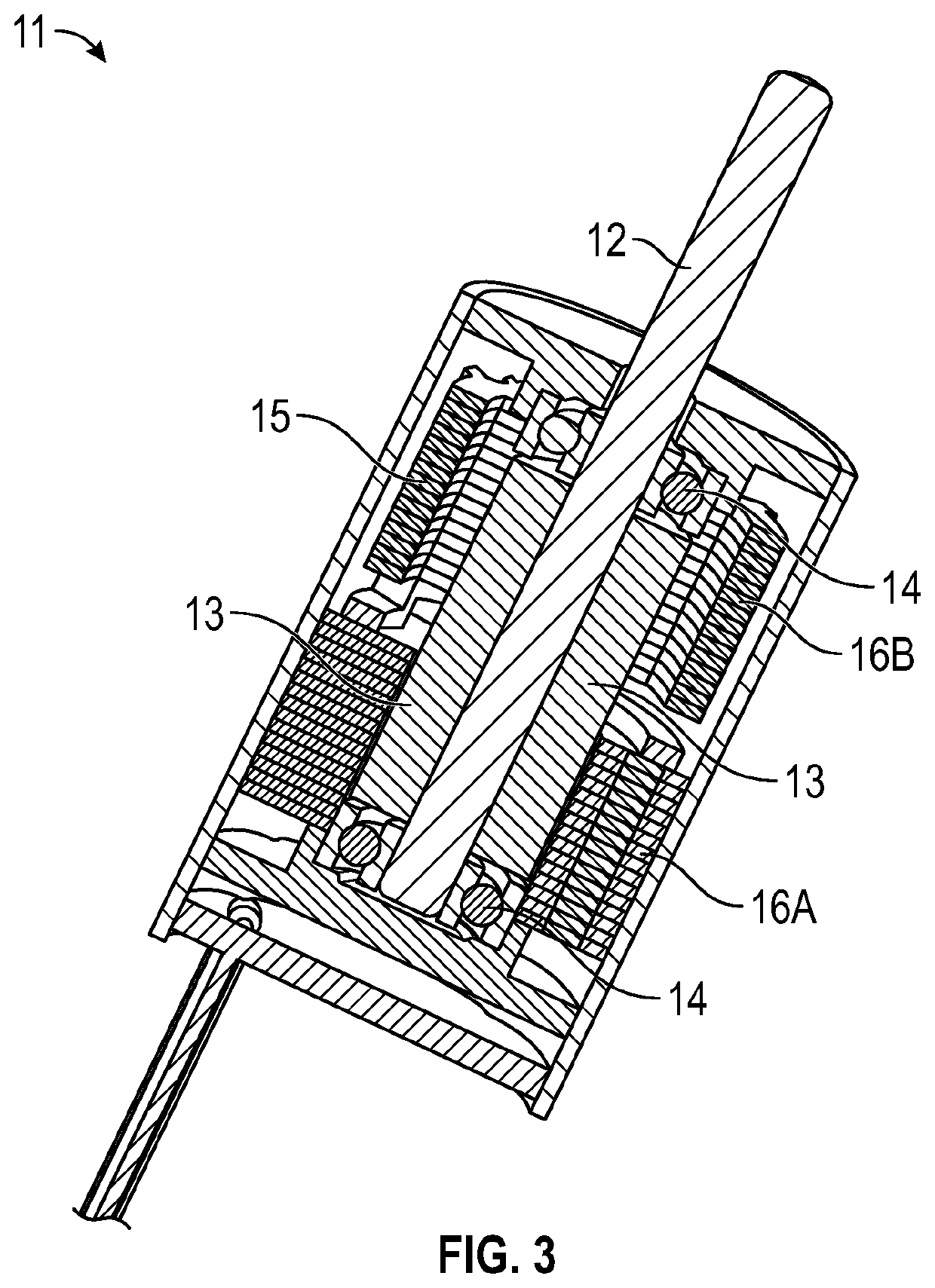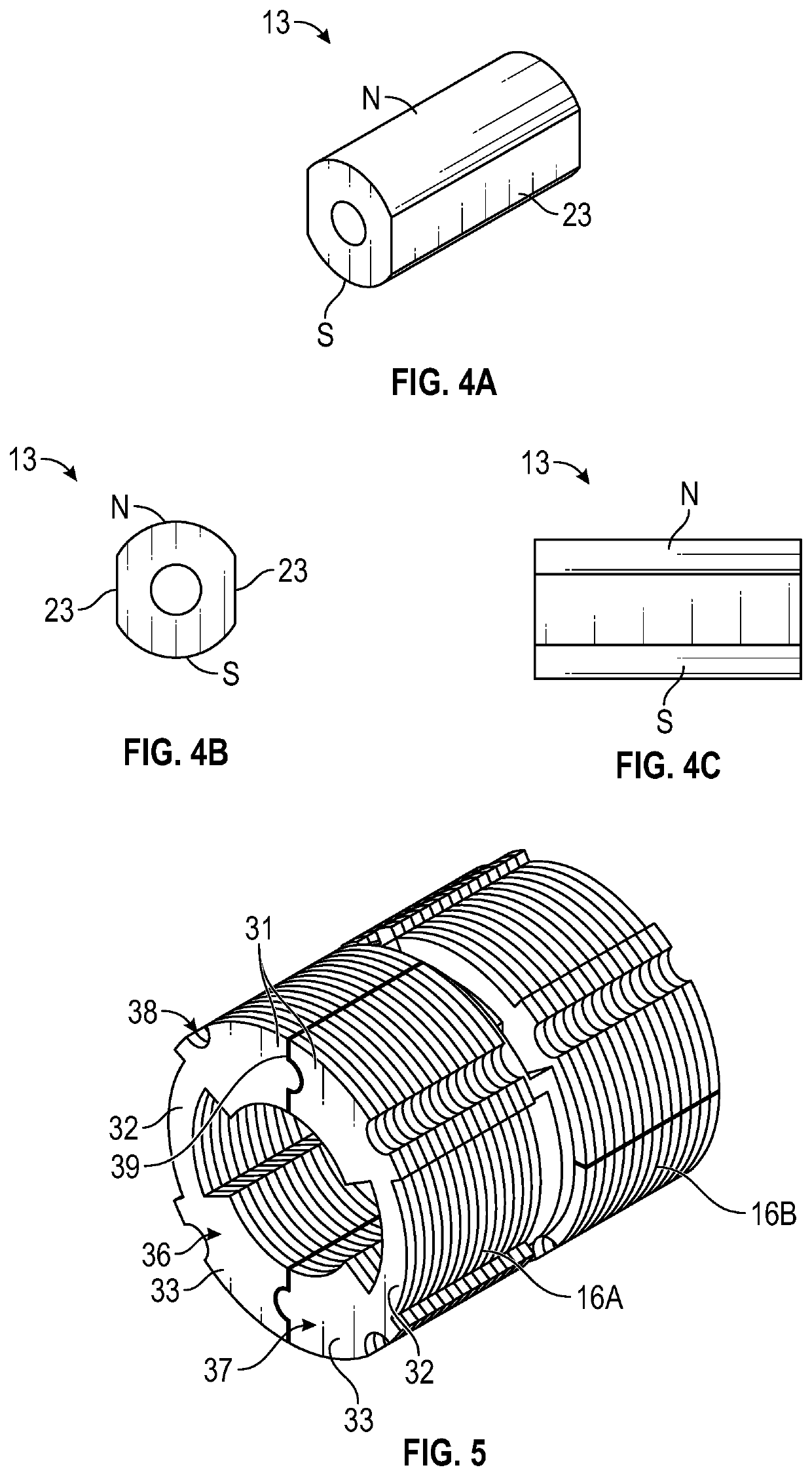Miniature step motor with independent phase stators
a step motor and phase stators technology, applied in the field of step motors, can solve the problems of insufficient torque of the rotor with a hybrid stator, the inability to meet the demand for higher torque by a standard, and the narrowness of the magnet pole strip, etc., to achieve the effect of higher speed and higher speed
- Summary
- Abstract
- Description
- Claims
- Application Information
AI Technical Summary
Benefits of technology
Problems solved by technology
Method used
Image
Examples
Embodiment Construction
[0023]A primary goal is to make a miniature motor that is both easy to manufacture and has relatively higher torque than a conventional stepper design. To achieve this objective, the motor's stator has been separated into identical phase-stators, e.g. a pair of phase-stators A and B for a 2-phase stepper, each of which in turn are assembled from two identical individual sub-stators with windings. Rather than using a winding needle to wind around stator poles after the stator has been assembled, we provide coils that can be wound easily around the respective individual sub-stators prior to assembly. Since each coil generates its own independent magnetic flux path, no losses are created when the sub-stators are assembled. For example, the invention can apply to 2-phase bipolar motors having 4 uniform stator poles. The pair of phase-stators A and B are oriented relative to each other with a 90° axial rotational shift. (In an alternative embodiment, if corresponding stacked sections of ...
PUM
 Login to View More
Login to View More Abstract
Description
Claims
Application Information
 Login to View More
Login to View More - R&D
- Intellectual Property
- Life Sciences
- Materials
- Tech Scout
- Unparalleled Data Quality
- Higher Quality Content
- 60% Fewer Hallucinations
Browse by: Latest US Patents, China's latest patents, Technical Efficacy Thesaurus, Application Domain, Technology Topic, Popular Technical Reports.
© 2025 PatSnap. All rights reserved.Legal|Privacy policy|Modern Slavery Act Transparency Statement|Sitemap|About US| Contact US: help@patsnap.com



